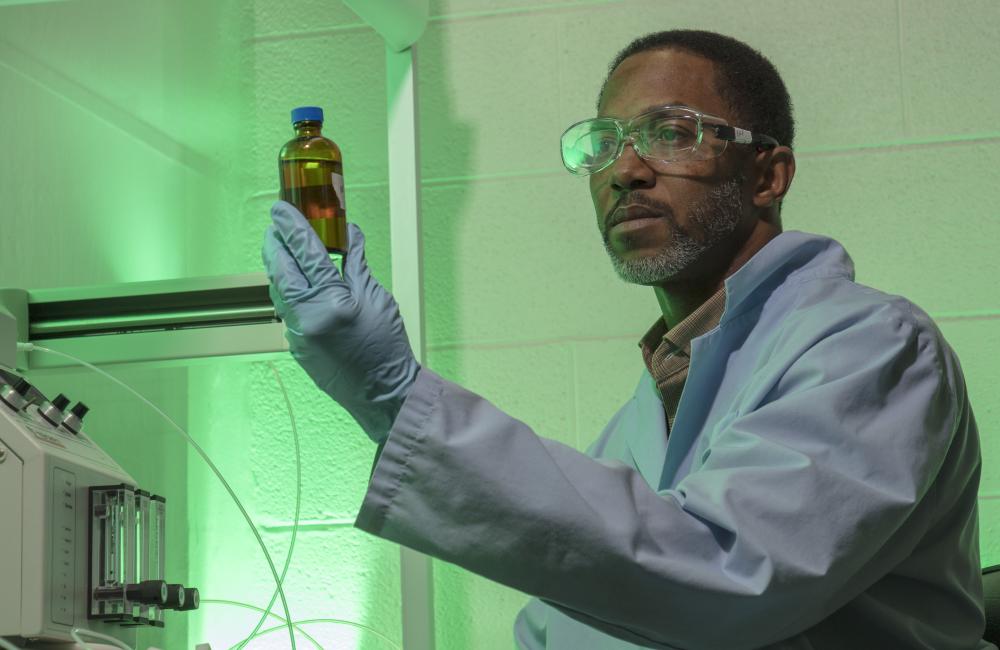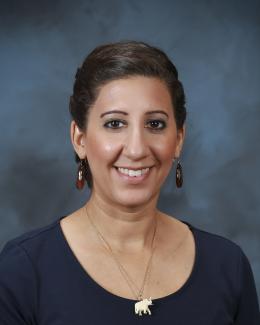Eric Pierce conducts research on mercury transformation in the environment at Oak Ridge National Laboratory.
Pierce reports on DOE Oppenheimer leadership program experience
Eric Pierce, leader of the Earth Sciences Group at Oak Ridge National Laboratory, recently completed the DOE Oppenheimer Science and Energy Leadership Program, just as a second staffer was chosen for the distinguished course that identifies and develops leaders at the national labs.
The yearlong program was developed to introduce the next generation of leaders to the breadth and depth of the national laboratory system. This year's 18-member cohort, whose members bring diverse backgrounds from within all 17 national laboratories, will tour national labs around the country. They'll write "think pieces" based on their experiences that address specific improvement areas for the DOE national laboratory complex.
For Eric, the experience was unparalleled in providing both a working level and big picture view of how the national laboratory system works, including all the challenges labs face day to day. And he already had a unique background, having spent a year with DOE in Washington, D.C., during a federal administration change.
"Even having all that insight after a year in D.C., the year of traveling around the complex and seeing the different labs and the different missions through the Oppenheimer program still offered a unique perspective that I don't think you can get any other way," he says. "The breadth and depth of the science at each institution is amazing, and that is probably an understatement."
The highlights were too many to list, but among the "coolest" things Eric got to see during the program was the National Ignition Facility at Lawrence Livermore National Laboratory, where 192 lasers focus onto a point the size of a pencil eraser to imitate conditions found in stars, planets and nuclear weapons. He visited weapons labs he'd never seen and heard about past challenges and new plans from national leaders including former Energy Secretary Ernest Moniz.
The program had a lasting impact, which Eric has brought back to ORNL as a strong advocate. It taught him how to navigate systems within and outside the lab, support staff members in his group and gave him insight into inter-lab teaming opportunities. Most importantly, it gave him a renewed appreciation of the entire system.
"Overall if I was to sum it up, I think what the labs do for the country, you hear people say this all the time that 'the national labs are a crown jewel,' it often sounds like it's just kind of a cliché statement, but having been at two, having been able to go to at least 14 -- they really are the crown jewel," Eric says. "The things they do for the country and the way the complex has the ability to focus resources on a really, really difficult problem is quite unique – so unique that every other country is trying to recreate it – and we have it."
Tara Pandya of the Reactor & Nuclear Systems Division was recently accepted into the 2020 cohort for the program, making her the second ORNL staff member accepted since the program started four years ago.
"It's a really big honor," says Tara, who develops radiation transport code for reactor simulations. "It's very rare that someone gets the opportunity to do what we get to do."
"For me it's about seeing everyone's perspective on how the labs work, their missions, how they work together, because they're coming from all different backgrounds," Tara says.




